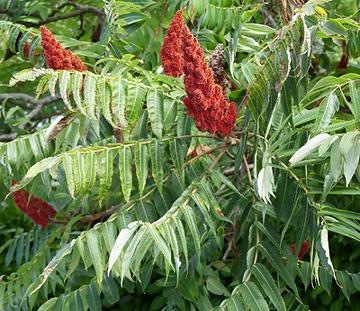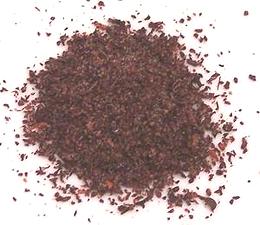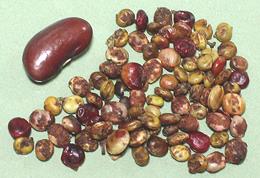 [Sicilian sumac, Tanner's sumac; Rhus coriaria, Cashew Family]
[Sicilian sumac, Tanner's sumac; Rhus coriaria, Cashew Family]
This shrub is native to southern Europe, eastern Mediterranean, Caucasus, Crimea, and northern Iran. It has been naturalized through most of the Mediterranean Basin and Macronesia. Photo by Père Igor distributed under license Creative Commons Attribution-ShareAlike v4.0 International
The seed coating has been used since ancient times as a souring agent, especially when lemons and limes were not yet available, or in regions too dry to grow them. It may have medicinal properties and various parts of the plant are used to make dyes. The hard seeds can be crushed for an oil useful for making candles. Leaves and bark were formerly used for tanning leather, as they contain tannic acid.
Caution: Do not use other Sumac varieties, as most are toxic, related to Poison Ivy. Staghorn Sumac berries, though, are used to make a lemonade like drink.
More on Cashew Family.

This is the form of Sumac commonly sold as a souring agent, especially
for recipes of the eastern Mediterranean. It is easily available in the
spice section of any market near a significant Mediterranean or
Middle Eastern population, and on-line.

This form of Sumac is used to make a souring liquid that is more clear
than can be made with the ground sumac. The hard seeds a skins are
strained out after being boiled for awhile. It is not so commonly available
as the ground, but in North America is available on-line.